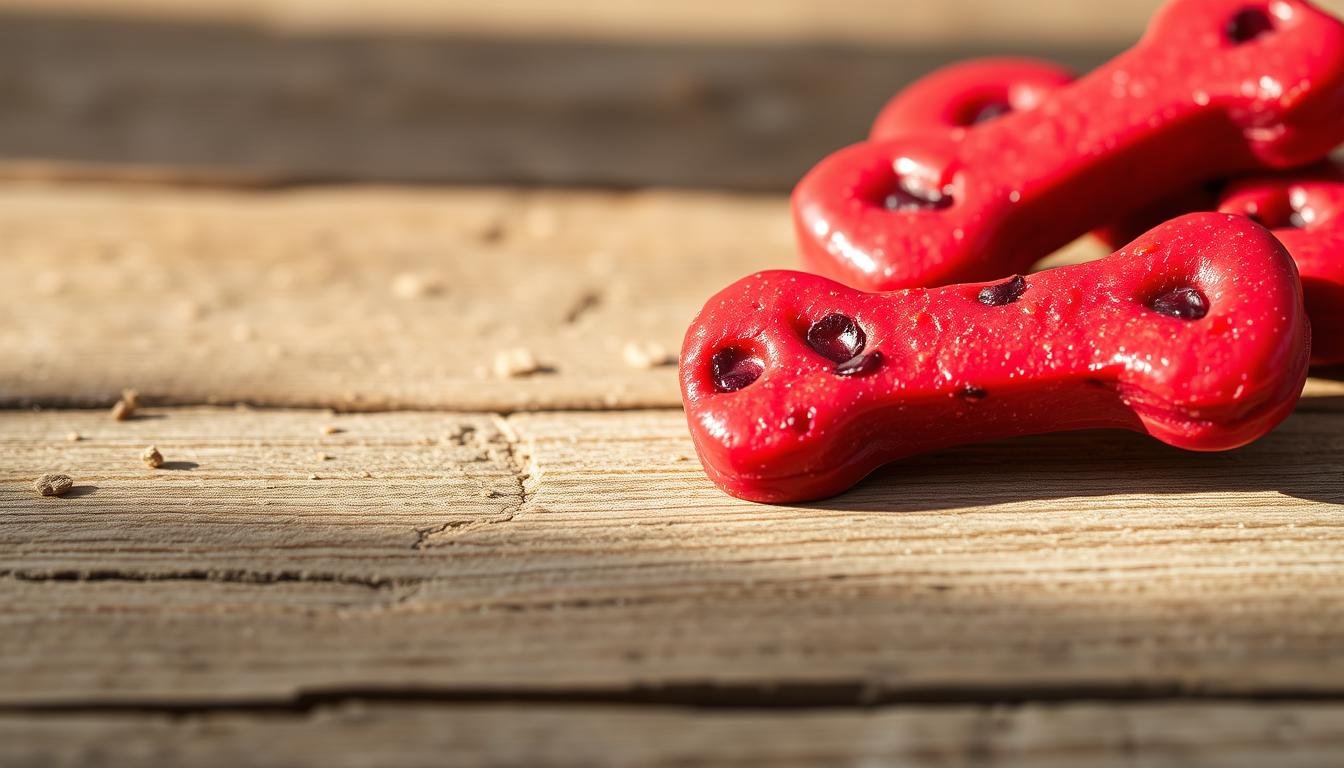Picture this: you’re enjoying a bowl of fresh cherries on a sunny afternoon, and your furry friend gazes up at you with those irresistible puppy eyes. It’s tempting to share your snack, but is it safe? Cherries, a beloved fruit for many, can be a tricky treat for pets.
While the flesh of cherries offers vitamins and antioxidants, other parts like pits, stems, and leaves contain cyanide, a toxic compound. Even a small amount of these parts can pose serious health risks. Additionally, pits can cause choking or intestinal blockages, making them a hazard for your pet.
This guide dives into the dual nature of cherries for dogs. We’ll explore their potential benefits when prepared correctly and the dangers of improper feeding. Understanding how to safely serve this fruit is crucial for keeping your pet healthy and happy.
By relying on veterinary advice and reputable sources, we aim to help you make informed decisions. Whether you’re considering cherries as a snack or looking for safer alternatives, this article provides the essential information you need.
Key Takeaways
- Cherries contain beneficial nutrients but pose risks if not prepared properly.
- Pits, stems, and leaves are toxic due to cyanide content.
- Choking and intestinal blockages are significant hazards from cherry pits.
- Moderation is key when feeding cherries to pets.
- Safer fruit alternatives include blueberries and sliced apples.
Understanding the Dangers of Cherries for Dogs
Sharing a snack with your pet might seem harmless, but certain foods can pose hidden dangers. While cherries are a nutritious fruit for humans, they can be risky for pets. The primary concern lies in the pits, stems, and leaves, which contain cyanide, a toxic compound.
The Role of Cyanide in Cherry Pits, Stems, and Leaves
Cyanide is a potent toxin found in cherry pits, stems, and leaves. When ingested, it can interfere with oxygen transport in the bloodstream, leading to severe health issues. Even a single pit can release cyanide, especially if chewed or crushed.
Symptoms of cyanide poisoning include difficulty breathing, bright red gums, and lethargy. In severe cases, it can cause seizures or even death. Immediate veterinary care is crucial if poisoning is suspected.
Choking Hazards and Digestive Blockage Concerns
Cherry pits pose a dual threat. They are a choking hazard, particularly for smaller pets. Additionally, if swallowed whole, they can cause intestinal blockages, leading to discomfort and requiring surgical intervention.
Signs of blockage include vomiting, diarrhea, and a lack of appetite. If your pet shows these symptoms after eating cherries, seek veterinary help immediately.
| Risk | Symptoms | Action |
|---|---|---|
| Cyanide Poisoning | Difficulty breathing, bright red gums, lethargy | Seek immediate veterinary care |
| Choking Hazard | Coughing, gagging, distress | Remove the pit and monitor closely |
| Intestinal Blockage | Vomiting, diarrhea, lack of appetite | Consult a veterinarian |
Understanding these dangers is essential for making informed feeding decisions. Always remove pits, stems, and leaves before offering cherries to your pet. Moderation and proper preparation are key to ensuring their safety.
Nutritional Benefits and Health Concerns

When considering fruits for pets, cherries often spark curiosity due to their unique nutritional profile. The flesh of this fruit is packed with vitamins, antioxidants, and fiber, which can offer some health benefits. However, it’s essential to weigh these advantages against potential risks, especially the high sugar content.
Vitamins, Antioxidants, and Fiber in Cherry Flesh
Cherry flesh contains vitamins A and C, which support the immune system and promote healthy skin. Antioxidants in cherries help reduce inflammation, while fiber aids digestion. Additionally, cherries contain melatonin, which may help regulate sleep cycles.
These nutrients make cherries a tempting snack for pets. However, it’s crucial to remember that the benefits are only present in the flesh. Pits, stems, and leaves should always be avoided due to their toxic cyanide content.
High Sugar Content and Associated Risks
While cherries offer nutritional value, their high sugar content is a concern. Excessive sugar can lead to obesity, diabetes, and other health issues in pets. Moderation is key when sharing this fruit with your furry friend.
For a safer alternative, consider fruits like blueberries or sliced apples. These options provide similar nutritional benefits without the risks associated with cherry pits or high sugar levels.
- Cherry flesh contains vitamins A and C, antioxidants, and fiber.
- High sugar content in cherries can lead to obesity and diabetes.
- Safer fruit alternatives include blueberries and apples.
Understanding the balance between benefits and risks is vital. For more tips on safe cherry treats for pets, consult trusted sources and your veterinarian. Always prioritize moderation and proper preparation to ensure your pet’s safety.
Can Dogs Have Cherries? Safety Considerations

Many pet owners wonder about the safety of sharing cherries with their furry companions. While the flesh of this fruit is non-toxic, other parts like pits, stems, and leaves pose serious risks. Proper preparation and moderation are essential to ensure your pet’s safety.
Proper Preparation: Removing Pits, Stems, and Leaves
Before offering cherries to your pet, it’s crucial to remove all hazardous parts. Pits, stems, and leaves contain cyanide, a toxic compound that can cause severe health issues. Even a single pit can release cyanide if chewed or crushed.
Always ensure cherries are pitted and de-stemmed. This step minimizes the risk of poisoning and prevents choking or intestinal blockages. Fresh or frozen cherries are the safest options, as they are less likely to contain added sugars or preservatives.
Safe Serving Sizes and Occasional Treat Guidelines
When feeding cherries to your pet, moderation is key. The high sugar content in this fruit can lead to digestive distress or long-term health issues like obesity. A small, controlled portion is recommended, and cherries should only be an occasional treat.
Monitor your pet closely after feeding. Symptoms like vomiting, diarrhea, or difficulty breathing may indicate a problem. If any issues arise, consult your vet immediately.
For more tips on safe cherry treats for pets, consult trusted sources and prioritize your pet’s health. Always adhere to strict preparation protocols to ensure their safety.
Conclusion
Feeding cherries to pets requires careful consideration due to their dual nature of benefits and risks. While the flesh offers vitamins and antioxidants, the pits, stems, and leaves contain cyanide, a toxic compound that can cause severe health issues. Choking hazards and intestinal blockages are additional concerns.
Proper preparation is essential. Always remove pits and stems to minimize risks. Serve in small amounts to avoid digestive distress or long-term issues like obesity. Watch for symptoms such as difficulty breathing, red gums, or diarrhea, and consult a vet immediately if they occur.
For safer alternatives, consider fruits like blueberries or sliced apples. These provide similar nutritional benefits without the risks. Always prioritize your pet’s health by making informed decisions and seeking professional advice when needed.





I never knew cherries could be risky for dogs! Always learning something new 🍒🐶
Did anyone consider how the dogs breed might impact cherry digestion? Not all dogs are created equal, folks!
I find it hard to resist giving cherries to my pup! Thoughts? 🍒🐶
Feeding cherries to your pup is dangerous! They contain pits that can be a choking hazard.
Interesting read! But wouldnt it be safer to just stick with dog-friendly fruits like apples and bananas?